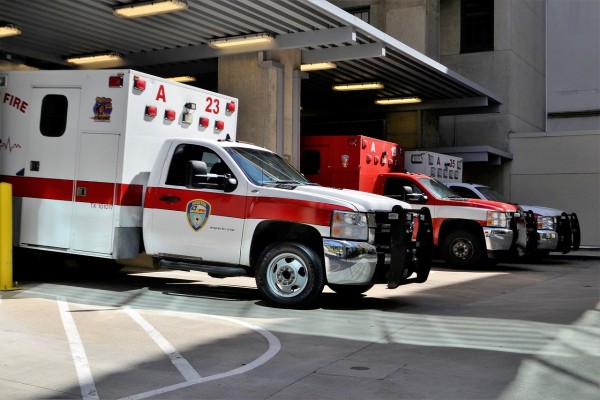Research Shows Tranexamic Acid Could Be Life Saving for Trauma Victims
A study conducted by experts from the UK and France revealed that a common drug, tranexamic acid, can be used as a lifesaving treatment for accident victims.
When injected intramuscularly, it can prevent severe bleeding from trauma victims at the scene of the accident, and can potentially save the lives of thousands.
The team found that injecting tranexamic acid (TXA) within an hour of the incident, via intramuscular, like that of a flu injection, can reduce traumatic injury mortality rates by up to a third. They proved that this drug could be administered successfully through an intramuscular injection rather than the traditional intravenous route.
READ MORE: Artificial Intelligence Can Detect Brain Blockages and Reduce Time to Treatment
Because setting up the traditional intravenous line takes time and the drug must be injected slowly, the new research showed that by giving TXA through an intramuscular injection, the drug could be rapidly absorbed from the muscles with no local adverse effects. And because this drug is administered like a flu jab, it is not time-consuming, nor does it need special training to do so. This new research was spearheaded by the London School of Hygiene & Tropical Medicine (LSHTM) with partners including The Royal London Hospital and St George's Hospital.
Every 15 minutes of delay in treatment reduces the lifesaving potential of the drug by 10 percent. Unfortunately, only 3% of UK trauma victims can get access to TXA within an hour of injury.
The findings of the study are most beneficial among the low- and middle- income nations as these places have first responders who are less likely to be trained to set up intravenous lines.
Most of these countries reported more than 90 percent of the world's trauma deaths, 80 percent of which occur even before the patient arrives at the hospital.

"Vaccine" Against Death
According to Ian Roberts, author of the paper, intramuscular tranexamic acid is like a vaccine against trauma death. The rapid injection of this dug by first responders or paramedics can be lifesaving after a severe injury. Delay in its administration can mean the difference between life and death.
In the study, Professor Roberts and his colleagues treated 30 trauma patients admitted to two UK hospitals. The first dose of TXA was administered intravenously, and the following guidelines allowed a second dose.
Blood samples, injection sites, and TXA concentrations were then studied. The team revealed that the most important observation was that the drug was rapidly absorbed into the bloodstream and reached the required level to save lives within 15 minutes or less in all cases, even the sickest ones.
It was well-tolerated as there were only mild reactions that were observed, such as some redness and transient swelling.
Implementation in Real-Life Setting
Professor Roberts is confident that this new way of using it can be adapted immediately, as the therapeutic effects can be experienced quickly.
The team is now collaborating with the British military, the British Armed Forces, to develop a tranexamic acid auto-injector that can be used for administering on the wounded on the battlefield. The injured soldiers can also administer it on themselves or their buddy as it would function like the allergy pen, EpiPen.
The full findings of this study were published in the journal British Journal of Anaesthesia, and the authors concluded that this would still need proper field testing before adoption.
Further reading: Post-Infectious Hydrocephalus in Ugandan Children Linked to Bacteria-Virus Combination
Check out more news and information on Medical Technology on MD News Daily.
Oct 02, 2020 07:00 AM EDT





